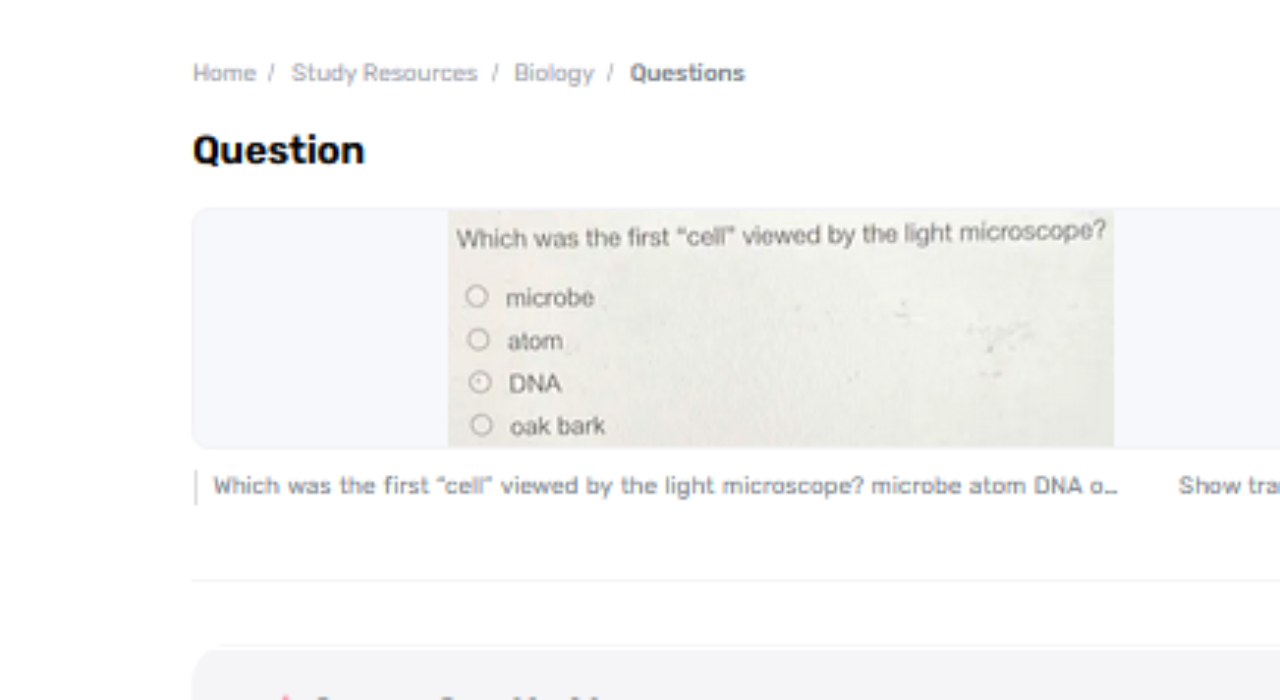The history of cell science is significantly weaved with the progression and movements of microscopy. which was the first “cell” viewed by the light microscope? microbe atom dna oak bark The light amplifying focal point, a dynamic advancement, enabled analysts to examine the minor world and make divulgences that laid the foundation for progressed science. One of the foremost reliable and most basic disclosures was the discernment of cells, a term coined by Robert Hooke. This article burrows into the focuses of intrigued of the essential cell seen by the light amplifying instrument, centering on the chronicled setting, the coherent handle, and the proposals of this groundbreaking recognition.
Robert Hooke's Initiating Revelation of Cells in Oak Bark
Robert Hooke's recognition of cells in a cut of oak bark checked the essential recorded event of cell revelation utilizing a light magnifying instrument. Reported in his 1665 work Micrographia, this disclosure laid the foundation for cell theory, revealing the essential building squares of life and changing our understanding of normal structures.
True Setting of Early Microscopy
The light amplifying instrument was made in the late 16th and early 17th centuries, giving analysts a capable device to see structures as well as small to be seen with the uncovered eye. A few times as of late the advancement of the amplifying focal point, the concept of cells as the essential units of life was obscure. Researchers like Antonie van Leeuwenhoek and Robert Hooke were pioneers in microscopy, making critical commitments to our understanding of the little world. Hooke, in particular, is credited with making the essential recorded recognition of cells, a revelation that would have noteworthy proposals for science.
Robert Hooke’s Disclosure
In 1665, Robert Hooke disseminated his seminal work, Micrographia, in which he documented distinctive recognitions made with a compound light amplifying instrument. Among these discernments was his examination of an incline cut of plug, gathered from the bark of an oak tree. Hooke depicted the structure he observed as being composed of minor, cleanse compartments which he named "cells" since they reminded him of the small rooms, or cells, possessed by monks. This discernment was the essential recorded event of what we get to be plant cells, checking a critical miniature inside the history of science.
Proposals for Cell Theory
Hooke's disclosure of cells in oak bark had far-reaching recommendations for the advancement of cell theory. It given the essential visual demonstrates that living creatures were composed of discrete, assistant units. This perception laid the establishment for future analysts, such as Matthias Schleiden and Theodor Schwann, who would a while later characterize the cell theory inside the 19th century. Cell speculation, which states that all living life shapes are made of cells, that the cell is the basic unit of life, and that all cells arise from pre-existing cells, may well be a pivotal run of the show of science. Hooke's work was instrumental in setting up the concept that cells are the building squares of all living things.
Coordinate to Utilize Gauth for Homework Offer assistance
1. Log In and Investigate to Your Subject:
Open the Gauth app or location, sign in, and go to the subject locale that matches your homework.
2. Enter Your Homework Issues:
Input your specific homework questions or exchange related records to actuate and offer help.
3. Apply the Heading:
Consider the arrangements and clarifications given by Gauth, and utilize them to add to your homework assignments.

Conclusion
In conclusion, the essential cell seen by the light amplifying focal point was the cell divider remainders in a cut of oak bark, as observed by Robert Hooke. This revelation, nitty gritty in his conveyance Micrographia, was a groundbreaking diminutive inside the field of science. By recognizing and naming these structures "cells," Hooke gives essential see into the microscopic world of living life forms, setting the organize for the change of cell speculation. The recognition of cells in oak bark not as it were progressed consistent understanding at the time but as alsoeared the way for future divulgences that continue to shape our data of life at the cellular level.


